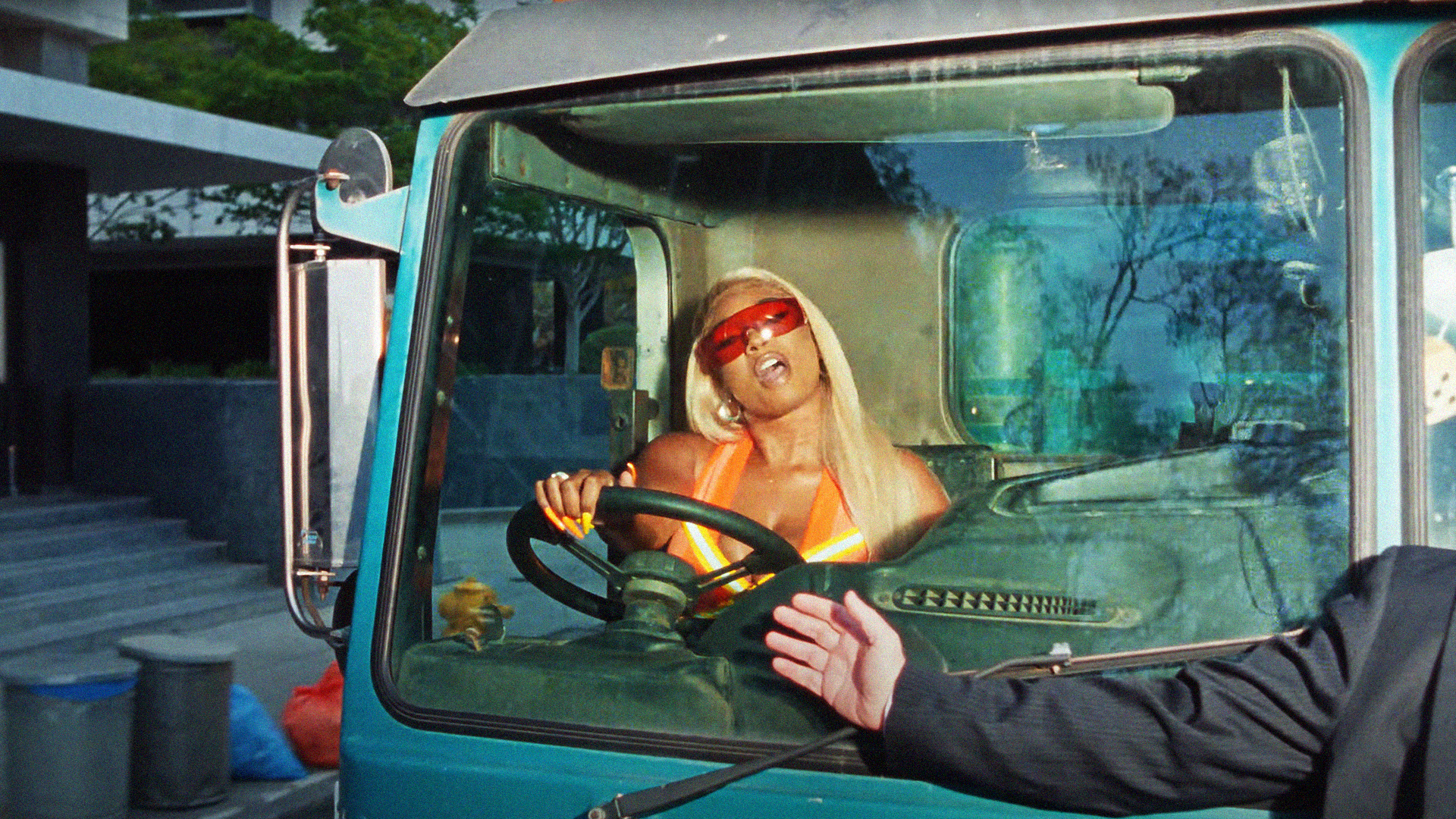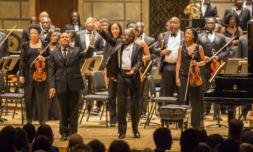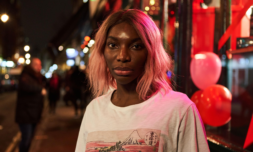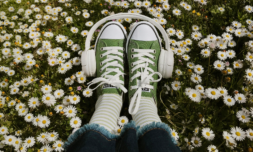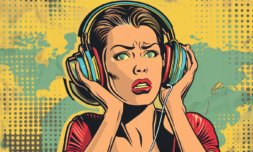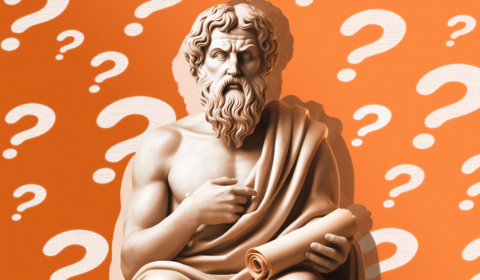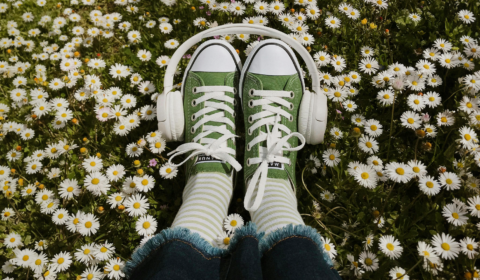Until The New York Times redirected the spotlight onto Jalaiah in their article, many didn’t know she was the creative behind the global trend, despite her attempts to receive credit by leaving comments on viral posts.
Some of TikTok’s favourite stars had already performed ‘The Renegade’ at an NBA game and well-known talk shows by the time she received proper recognition. Yikes.
After the NYT article went live, Jalaiah was asked to star in the music video for the song ‘The Renegade’ was choreographed to. This sparked further acknowledgment and she is now verified on social media, has been selected for Forbes 30 under 30, and was featured in Prada’s virtual streetstyle photoshoot – congrats, queen.
However, the outcome of Jalaiah’s story is uncommon. Many Black creators go uncredited everyday for their choreographies and audio clips on TikTok.
‘Black creators carry TikTok on our backs. We make the trends, we give the looks, we are funniest — there’s no argument about it. But what ends up happening is non-Black folk appropriate our content, and they end up being the faces of what Black folks created.’ – TikTok creator, @theericklouis
Looking at the wider problem
The replication of Black culture by non-Black communities has become increasingly popular in both online and offline spaces, mainly due to the rise of social media.
‘Digital Blackface’ – adopting elements of Black culture without identifying as Black – has been highlighted as problematic. Examples of this are the use of Black GIFs, skin darkening filters, and the use of African American Vernacular English (AAVE) by non-POC.
You might be wondering, what’s the issue with calling my best friend ‘bae’ or screaming ‘SLAY SIS!’ at a Beyonce concert?
The straightforward answer is that AAVE developed in oppressed, impoverished Black communities in the southern parts of America, areas which are often perceived as ‘undesirable’ by the privileged groups who have adopted its use.
While the Black community regulates their use of AAVE to survive in day-to-day, non-Black people can switch this on and off at their liberty, without concern for potential social or economic consequences.
AAVE made its way further into the wider community through corporate marketing attempts to resonate with younger audiences. Commodifying Black culture this way has enabled many corporations to gain enormous profit, while those who started it remain marginalised.
Making matters worse, the use of AAVE in advertising strips it of all context – resulting in people who have no connection to the culture using words and phrases incorrectly.
‘It is akin to mimicking a culture of people who have been consistently oppressed and denied opportunities for speaking in a manner that is now deemed acceptable for whites and non-black people to use.’ – BlackExplosionNews
In the not-so-distant future, languages, phrases, and slang could become more blended as digital media facilitates borderless communication.
Even so, there aren’t any hard and fast rules for using AAVE, but if someone tells you you’re taking it too far, it may be time to reassess your delivery of certain words as well as the context in which you use them.
Are filters and over-tanning Blackfishing?
Now, while the debate on the ethics of over-tanning and skin-deepening filters remains unresolved, many present the argument that fake-tanning past the colour you’d naturally achieve is an attempt to appear exotic or ‘racially ambiguous.’
Non-Black people have the luxury of temporarily darkening their skin whilst still receiving the privileges of being white. Meanwhile, Black communities face societal and institutional oppression due to the natural colour of theirs. One can be removed as desired and the other cannot.
And though tanning isn’t inherently racist, skin darkening techniques have become so extreme that one TikTok user has created a game where viewers are asked to guess: ‘is it a Black girl or a white girl with an aggressive tan?’ before doing a face reveal of each photo.
As someone who has watched this TikTok series in its entirety, I can tell you it’s sometimes very difficult to tell.
At the end of the day, incorporating elements of Black culture into your style, language, and digital habits has a lot to do with intention, and while good intentions don’t completely absolve non-Black people of these behaviours, a deepened understanding and appreciation of the culture is crucial.
Coming full circle, granting proper credit is also necessary. TikTok’s dependence on the richness of Black culture for its viral content has never been more evident, but it appears that its policies work against those who provide it with some of its best material.
This Instagram post sums it up completely.
TikTok’s well-known history of exclusion
Following reports of TikTok’s invisible censorship, it’s no surprise that those who achieve high levels of popularity on the platform are those who appear perfectly polished, live in modern, high ceilinged homes, and are white.
Moderators for the platform have been told to supress a broad variety of content, from natural disasters, threats to national security, and perhaps more ominously, any video which shows ‘rural poverty, slums, too many wrinkles, ugly facial looks, beer bellies and crooked smiles.’
The selective process for videos that feature on the ‘For You’ page of the app is still a mystery. Based on TikTok’s censorships policies, though, it would be safe to assume that people who meet Eurocentric beauty standards and are filmed in beautiful surroundings have a higher chance of gaining exposure.
To better credit OG choreographers, TikTok has started pinning the original creator’s video at the top of the audio page when possible, like in the case of the ‘Savage’ choreography. Though the audio has been used in posts by many other Black users, the videos that follow in the grid are mainly white users with significantly larger followings.
Taking all of this into consideration, the indefinite strike by Black TikTok creators is totally warranted. So much of Black culture has moved into the mainstream, occurring at a frequency that it implies other groups believe it’s theirs for the taking.
The strike emphasises wider problems of appropriation over appreciation, white privilege, and the commodification of Black culture. This moment could lead to massive positive change, where either Black creators see more return on their talent or move to an entirely different platform that has developed explicit ways to credit its users.
Until something is done, TikTok may risk becoming a dull, one dimensional space.









